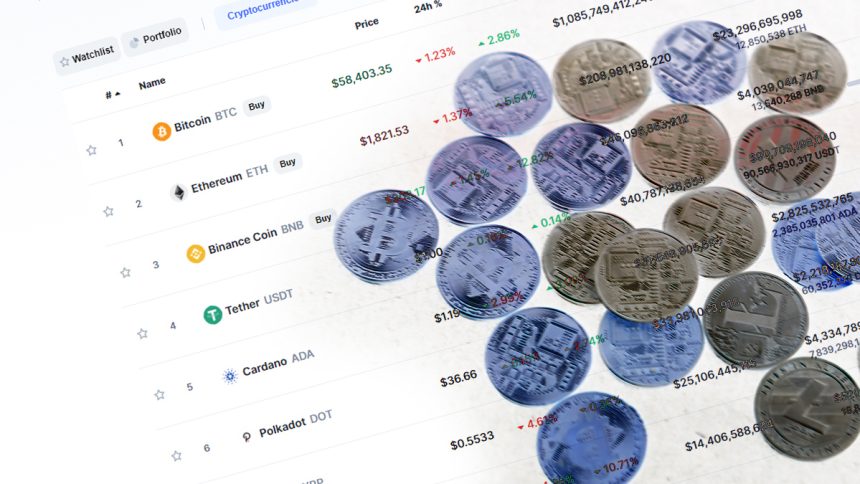Decentralized Physical Infrastructure Networks In short, DePIN represents a transformative approach to managing tangible infrastructure using Blockchain and IoT technologies. This approach decentralizes control and distributes authority across networks, providing a range of benefits including improved security, transparency, and efficiency. Moreover, it has the potential to democratize access to essential resources and economically empower individuals and communities. Despite its ongoing struggle with various challenges, the future of DePIN looks promising and has the potential to fundamentally change and reshape how we interact with and manage the physical world.
What is DePIN?
DePINrepresents an innovative application of Blockchain technology to manage and optimize physical infrastructure systems. By integrating Blockchain with other advanced technologies such as the Internet of Things (IoT), DePIN aims to transform traditional infrastructure models across various sectors, including energy grids, supply chains, telecommunications, and transportation networks. A Prize Pool Worth 21 Million TL Awaits You from BinanceTR! Participating and winning has never been easier.. You can sign up to BinanceTR from this link. Get your first crypto!
This approach aims to increase efficiency, transparency and security while creating decentralized networks that challenge traditional centralized systems that often suffer from inefficiency, security vulnerabilities and high costs.
How Does DePIN Work?
DePIN, through Blockchain technology physical infrastructure It works on the principle of decentralization of control over the blockchain. Its core concept involves using Blockchain’s secure and transparent ledger capabilities to record and verify transactions and data exchanges within a network. This distributed ledger ensures that every transaction is immutable and visible to all participants, thus promoting trust and accountability.
Alongside Blockchain, IoT plays a key role in DePIN by facilitating real-time data collection and communication between connected devices. IoT-enabled devices can autonomously communicate with the Blockchain by performing predefined actions through smart contracts. This integration enables the creation of self-organizing systems that can optimize operations and dynamically respond to changes in demand or supply.
For example, in a decentralized energy grid, smart meters and other IoT devices can track energy consumption and production, enabling automatic peer-to-peer energy trading. This can not only increase efficiency, but also encourage the adoption of renewable energy sources by rewarding participants with cryptocurrency incentives for their contributions to the network.
Application Examples
One of the most promising applications of DePIN is in the energy sector, where decentralized energy grids could facilitate peer-to-peer energy trading. This model allows individuals and businesses to generate their own electricity, typically through renewable sources like solar or wind, and sell excess energy directly to others on the grid.
Blockchain technology ensures that all transactions are transparent and automated, usually through the use of smart contracts that execute trades based on predefined conditions. This approach not only increases efficiency but also reduces dependency on centralized energy providers, leading to a more resilient and sustainable energy ecosystem.
DePIN provides unprecedented levels of transparency and traceability in supply chain management. Companies can track every step of a product’s journey, from raw material extraction to final delivery. BlockchainThis is especially valuable in industries that face counterfeiting or quality control issues, such as pharmaceuticals, luxury goods, and food and beverage. Blockchain’s immutable transaction record can help combat counterfeiting while increasing compliance with industry standards, ultimately protecting both businesses and consumers.
DePIN can also be used in the telecommunications space to create decentralized communication networks that reduce dependency on large telecom providers. The networks use Blockchain to distribute control across a wide range of nodes, making them less vulnerable to outages or hacking attacks. Users can earn cryptocurrencies by contributing bandwidth or other resources. This way, the growth and stability of the network is encouraged. This model not only reduces costs, but also makes access to communication services accessible to everyone, especially in underserved or remote areas.
What are the advantages of DePIN?
One of the key benefits of DePIN is its potential to increase the security and efficiency of physical infrastructure. Traditional centralized systems are often vulnerable to hacking attacks, manipulation, and single points of failure. In contrast, DePIN’s decentralized architecture makes it much more robust against such threats by distributing control across a network of nodes. Blockchain’s cryptographic security measures further protect data integrity, ensuring that transactions and data exchanges cannot be altered or deleted once they are recorded.
Transparency is another key benefit of DePIN, especially in industries where accountability is paramount. By recording all transactions on a public ledger, it provides a verifiable transaction history that can be audited at any time. This level of transparency is especially beneficial for industries like supply chain management, helping to ensure that products are ethically sourced and meet legal standards. It also allows consumers to make more informed choices, thus building greater trust between businesses and their customers.
DePIN also has the potential to make access to essential resources like energy, transportation, and data accessible to everyone. DePIN decentralizes control and empowers individuals and communities to directly participate in the management and distribution of these resources. For example, a decentralized energy grid would allow homeowners to generate and sell electricity, reducing reliance on centralized energy companies and fostering local economic empowerment. Similarly, decentralized transportation networks could allow individuals to share vehicles or resources more efficiently, reducing costs and environmental impacts.
The economic impacts of DePIN are profound. By decentralizing control over physical infrastructure, DePIN creates new opportunities for entrepreneurship and innovation, especially in underserved or marginalized communities. Individuals can participate in networks as node operators, earning cryptocurrency rewards in exchange for providing resources or services. This model not only creates new revenue streams, but also encourages the development of localized solutions to infrastructure problems, supporting a more inclusive and resilient economy.
Example DePIN Projects in the Cryptocurrency Market
Many projects in the cryptocurrency market have been developed based on DePIN. The first of these is Filecoin(FIL). Filecoin is a major DePIN project focused on the need for decentralized storage solutions. Filecoin creates a distributed network that increases data security, redundancy, and availability by allowing users to rent unused storage space. Users are incentivized to participate by being rewarded with cryptocurrencies for contributing storage capacity, ensuring decentralized and reliable storage of data.

Another cryptocurrency project developed based on DePIN is Render’dir (RENDER). Render focuses on providing decentralized GPU-based rendering solutions by connecting node operators with idle GPU computing power to visual artists and developers who need to scale intensive 3D rendering tasks. The network not only optimizes the use of existing computing resources, but also reduces costs for users, making high-performance computing more accessible and affordable.
Another project is The Graph‘ (GRT). The Graph provides a decentralized protocol for indexing and querying Blockchain data. By organizing data and making it easily accessible, The Graph enables developers to build decentralized applications more efficiently. This approach simplifies the development process and encourages innovation in the Blockchain ecosystem by lowering the barriers to entry.
Obstacles and Problems Facing DePIN
Despite its potential, DePIN faces several hurdles and issues that need to be resolved for widespread adoption. Regulatory uncertainties, technical scalability issues, and interoperability barriers are among the most significant challenges. Integrating blockchain technology with physical systems requires robust security measures and user-friendly interfaces to ensure the benefits of decentralization are realized without compromising usability or performance.
However, the outlook for DePIN remains optimistic. As the technology continues to evolve, solutions to these obstacles and issues can be expected to emerge, paving the way for broader applications. The continued development and convergence of Blockchain and IoT technologies can help resolve existing obstacles and issues, and create new opportunities for DePIN networks.
Disclaimer: The information contained in this article does not contain investment advice. Investors should be aware that cryptocurrencies carry high volatility and therefore risk, and should carry out their transactions in line with their own research.








